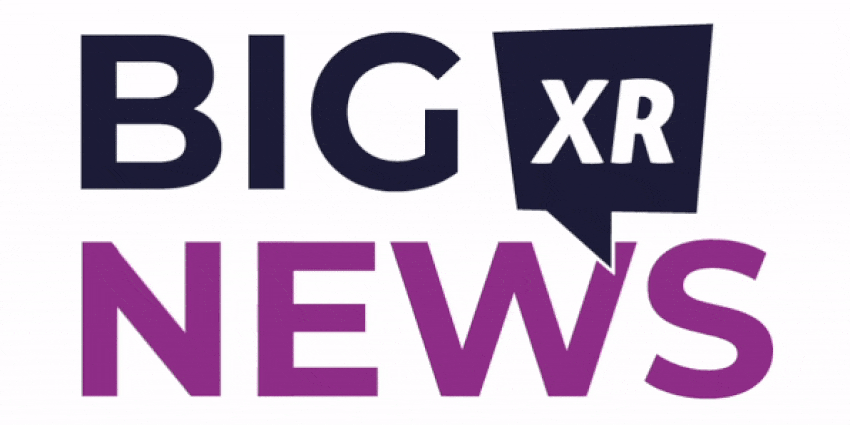This week gave an informative insight into the state of XR headsets.
While no significant announcements dropped, a handful of vendor updates paint a clear picture of the future of immersive hardware and its distribution.
Increasingly, it seems that MR devices may lead the way. While expensive, MR headsets allow an end user to leverage AR and VR applications from the same device. Therefore, MR headsets unify AR/VR/MR applications without forcing a user to own multiple pieces of hardware.
The likes of Apple and Meta are investing in MR to provide an accessible and feature-rich device. However, MR is already here. Firms like Microsoft and PICO are refining their pre-existing MR offerings to cement their legacy in the device race.
PICO Optimises MR and Hand-Tracking Features
PICO’s new OS contains core improvements to the devices’ hand-tracking input abilities with “comprehensively upgraded” hand-tracking-based interactions using “improved smart algorithms.” The OS’ smart algorithms reduce tracking errors, such as virtual hand jitter and flicker, to make its product’s controller-less inputs more accurate and stable.
Moreover, the update improves some of the devices’ MR capabilities, starting with enhancing the usability of its Mixed Reality Capture app, including an icon that indicates when a user starts a recording.
The OS 5.7 includes a trove of additional updates, including enhanced video quality, live previews, image stabilization for recording, new aspect ratios, silent updates, UI menu reorganization, improved WebXR performance, play boundary accuracy, and new 6DoF algorithms.
The firm is also introducing two updates exclusively for PICO 4 devices, including the ability for users to scan and link bank cards via the device’s Seethrough Mode and updates to text clarity in the device’s Room Capture screen.
PICO is updating its hand-tracking and MR features as other upcoming headsets – from firms such as Apple and Meta – offer similar technology, making XR headset vendors refine MR offerings as the technology becomes mainstream in 2024.
Meta CTO Explains why Quest’s reach is Limited
This week, Meta CTO Andrew Bosworth once again spoke on the current standing of the Meta Quest Portfolio.
Bosworth noted:
It’s not free to start shipping your device to every market. – When you have hardware you have to support it, you need to have on-the-ground locally sales support, marketing support, retail partnerships, the right content, the right translations, the right content policy, the right legal frameworks…
The CTO also noted how overhead plays a part in regional availability. “There are some markets that are too small [and] too underdeveloped, relative to the price of the device, for us to really invest at this early juncture,” Bosworth noted.
He added that importing the headset would make it too expensive for Meta’s target audience to afford in some countries, particularly Latin America. The Quest 2 and Quest Pro are not currently available in any Latin American country.
Aside from the logistics of getting the headset in new countries, Bosworth also said that political reasons also play a part in where Meta launches products.
Is the HoloLens 3 Closer Than We Think?
Not long ago, Microsoft filed a patent request for a lighter MR device with a modular framework, providing enterprise end-users with improved usability and form factors.
Microsoft’s head-mounted device patent also includes a “rigid frame and front and back visor lens” with integrated sensors, waveguide optics, display/projection devices, dimmable display, additional equipment such as a “headband, VR headset, glasses temples, helmet,” and a “rear-attachment module may be provided that can provide auxiliary compute, storage, and power resources.”
It is unclear how many, if any, of these features will see the light of day. However, the notable improvements, such as a lightweight design, modular frame, and dimmable display, fit alongside its IVAS military-grade XR device – perhaps a glimpse into the future of the HoloLens 3.
The IVAS headset is undergoing a crucial testing face which sees military professionals use the new and improved version of the device in the field. The recent iteration contains minor improvements, similar to the patent, which may suggest features in a further HoloLens product, such as device visibility at night, weight, and form factor.
Lola Bryan, Principal Program Manager at Microsoft, proclaimed the firm’s dedication to XR when it debuted the Windows Holographic version 23H1, noting:
By making this investment, we have optimized our engineering infrastructure and increased engineering velocity. For end-users, we have increased reliability and predictability of updating apps, as well as the OS.
Samsung Leaks MR Headset Specifications
The week, Chinese news publication Gyro Technology leaked the design specifications of Samsung’s upcoming MR headset.
According to the now-deleted article from Gyro Technology, the upcoming headset will leverage four tracking cameras, a pancake lens, two RGB outward-facing cameras, a depth sensor, eye-tracking, hand-tracking, OLED microdisplays, and Samsung’s Exynos 2200 chipset.
The details reveal that the upcoming headset will support MR applications with its integrated outward-facing cameras, tracking, and sensor devices.
According to the leaks, Samsung’s MR device will cost roughly between $1000-$2000.
The news comes as Samsung aims to “secure” leadership in the future of XR via deep investments into microdisplay technology. For example, Samsung bought microdisplay innovator Imagine last year for 290 billion Won; the firm is waiting for merger approvals from various country authorities, and the firm should start to see a capital return in October this year.

